|
|
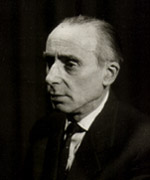
|
ANTONIO VILLAFRANCA (1901-1972)
The profligate. Part legend and part rumor, the history of Villafranca raises to blisters and chills. People say that he was so angry when he lose that in one occasion, watching with eyes injected in blood to the rival who finished winning to him, Villafranca, without mercy, standed up at half of the game and left the bar. In his defense it is necessary to recognize that he was one of first players in defending the elimination of the inverse annotations, that would take almost two decades in disappearing. He was able to become championship of Spain 3 consecutive years in Matalosmontes del Condado, Maspalomas and Villatobas de Ajuel.
|
|

|
ATILANO VERGEL (1904-1950)
The wealthy. People say that he was the first player of Zale that paid somebody to taught him the rules and the art of the game. After spending good part of his familiar fortune in trips to learn with the best European teachers, finally he was able to learn enough to recover the inverted money and to double his fortune in championships of clandestine bets between 1930 and 1936. The prohibition of the Zale during the Spanish civil war in the national zone prevented him to continue playing.
|
|

|
JAIME BIGÜELO (1919-1980)
The magic dwarf. He left his studies by the ridicules of his companions due to the pronounced appearance of his ears and decided to follow the passages of his father, professional player of Zale. Unlike its ancestor, who was not successful in boards, "the magic dwarf" was not only able to snatch the fame to Velasco, but was the first player who dared to carry out contrazale with a turn in the last double horizontal-horizontal movement at the final game of Florence championship against Brachetti in 1940. After a wild youth, he got anticipated senile dementia and he spent decades in a mental sanatory.
|
|

|
PACO ORTEGA (1924-1986)
The baker of huelva. Although his father wanted Francisquito to go on with the familiar business of the bakery and manufacture of buns of hojaldre with sugar glas, Ortega decided to leave his family and he got money enough to emancipate at the age of 18. He was one of the best Andalusian players of the time, feared in all nocturnal boards from Huelva to Almeria. In 1944 he gained his first championship of Spain in Maspalomas, city that brought luck to him and that returned to give him the glory in 1946 and 1947.
|
|
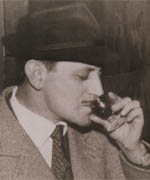
|
GERARDO CUBILLO (1925-2001)
The wineglass. Doubly nicknamed the wineglass, by its liking to short of amount wines and by his previous work as a railroader, Cubillo was able to introduce the sense of humor in the game of the Zale. Getting to lose some game consciously by the mere fact to shout "Zale" when it was not a real Zale just to observe the reaction of his opposite. It gained the championship of Spain of 1967 and 1968 until a young man called Alvaro Diaz eliminated him in semifinals in 1969.
|
|
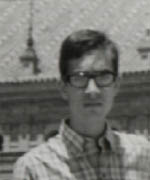
|
ÁLVARO DÍAZ (1954-1990)
The young prodigy. Being just 15 years old he was able to defeat to Bartolomeo I and to become the youngest champion of Spain in one very hard game which had to be postponed twice because of the rain. He could have been the greatest, but he could not because of his eternal enemy, Agustín Merino. The career of Díaz was eclipsed until 1975 by the shade of the inventor of the famous Merino turn. Retired Merino, Diaz returned to emphasize obtaining 12 smaller trophies.
|
|
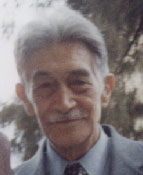
Merino in a recent picture (july, year 2000)
|
AGUSTÍN MERINO (1925)
The illustrious one. Born in Toro, Zamora, he emigrated to Madrid at the age of 17 in search of turning his liking to the medicine into a profession. After exerting like doctor until the 43 years, he discovered the Zale thanks to a peculiar clinical case. Being Merino leader of the service of X-rayses, there was brought a patient to him who had swallowed a strange thing. Radiographed this one, it turned out to be a white/black mape. The patient was not other that Bigüelo, "the magic dwarf", who had swallowed the mape in a madness attack. Merino, engrossed by the object which they extracted to Bigüelo, began to study the game of the Zale, with so large success that he became a professional. He left the exercise of the medicine and obtained what nobody had before: 6 consecutive championships of Spain (1970-1975). The success of his career its owed, without a doubt, to the movement that takes its name and that today is used by all the players of the world: the Merino turn.
|
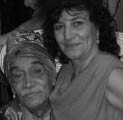
Merino in one of his Oriental trips
|
|
Copyright El Zale Producciones, 2002-2013. Who are we? Hosting powered by Cloud


|



